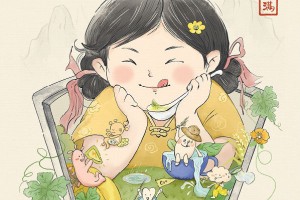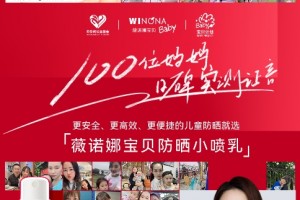
原标题:在外企上班,居然不知道这些英文缩写是啥意思,就会闹大笑话啦
咱们好!这儿是广州八熙翻译的《翻译小讲堂》,许多读外语的同学,结业后的方向,会挑选外企而不是翻译,但由于学习时和考试时,一般不运用缩写,但出来作业后,发现办公室的搭档总是用缩写做留言或笔记,假如你不熟悉这些职场缩写,那就很简单闹笑话啦~今日咱们就来看看有什么办公室缩写,学起来让你成为职场上的达人吧!
单词速记 Vocabulary
abbreviation (n.) 简称
acronym (n.) 缩写
to go off track (phrs. v.) 违背主题
to be off duty (phrs. v.) 下班
其他缩写 Other Acronyms & Abbreviations
Aside from understanding which field to enter the different types of recipients you may have, there are also other abbreviations and acronyms you need to be aware of when writing your ‘Subject’. You can use these to draw just the right amount of attention that you want when someone is scrolling through their inboxes.
除了了解怎么填写不同栏中的收件人,这儿还有一些写邮件的宗旨时有必要了解的简称和缩写。要记住,清晰的主题称号能够让收件人在阅览信箱时直接留意到要点。
RE: / Re:
Use this to indicate the email as a reply regarding or concerning the said matter.
用来指出此封函件是关于之前(有评论或是待评论)的主题。(邮件回复时都会呈现)
FW: / FWD: / Fwd: / Fw:
Use this to indicate the message as a forwarded message that was originally sent to someone else and is a copy of the original email.
用这个缩写来代表此封函件是由某函件转寄(「forward」)曩昔的,仿制本来函件内容。
ATTN:
A common abbreviation for the word ‘attention’. If you want to direct the message to a certain group or individual in a mass email, use in the subject line or header (followed by the individual’s or the group’s name) to grab their attention.
ATTN是「attention」常见的缩写。假如你想要在许多的函件中,向特别的某些集体或某些人传达信息,用这个标题或最初(后边写下你想要传达信息的集体或人)让他们留意此事。
WAS:
This is not an abbreviation but really just the past tense of the BE verb. Use this to indicate that the subject has been changed since the previous email exchange. It also prevents confusion for recipients from the sudden change in topic/subject.
WAS并非缩写,他便是咱们熟知的「BE」动词曩昔式。用「WAS」来表明标题的事情自从上一封已有更动。这也能够尽或许的防止收件人关于突发的改动感到困惑。
OT:
Off Topic. A fun little acronym should your email exchanges go a little off track. Just a clear reminder saying ‘hey guys, this is OFF TOPIC, but…’.
这儿的OT不是over time加班的意思,在邮件中一般指离题。此缩写的全拼为off topic,适用于函件沟通内容中小小离题时。用这个能够清晰的提示说:“嗨各位,这有点离题,但...”
OOO:
You can use this if you’re off duty and replying from Out Of the Office. This will allow people to know that they shouldn’t expect an immediate or prompt response from you. It’s also extremely common in automatic responder messages when people take a leave or go on vacation.
若你下班或不在办公室时则可运用「OOO」(「out of the office」的首字母缩写)。这能够让咱们知道,他们或许无法马上或实时的收到你的回复。这句常常在他人请假或度假时的主动回信中能够正常的看到。
EOM:
Stands for ‘End Of Message’, a big time-saver, especially if you can fit your message entirely in the ‘Subject’ line. This indicates a conclusion of the discussion and no need to reply.
「End of message」代表「信息完毕」,是一个省时刻的好东西。特别用于在标题。这代表你们的说话告此一阶段,不需求再回复。
PRB:
‘Please Reply By’ followed by a time. This helps the recipients to know that there’s a deadline for the reply.
“请于某个时刻回复”。这能够让收件者知道最终寄件时刻为什么时分。
NRN:
If you don’t need the recipients to reply, you can use this ‘No Reply Necessary’ acronym to possibly save some of their time.
若你不需求收件者在回复此邮件信息,能够用「NRN」,“不需回复”的首字母缩写,来节省时刻。
NSFW:
For those of you who get a little naughty at work and send things to coworkers that you probably shouldn’t. Any ‘Not Safe For Work’ content should be indicated in the subject line to avoid your fellow colleagues from getting into trouble!
这大约合适给那些狡猾的人在办公室上班时传送不合适作业场域的内容。任何「not safe for work」“不合适作业场域”的内容都应该在标题上注记,才不会让你的搭档们倒大霉!
SFW:
The opposite of NSFW, the ‘Safe For Work’ acronym is no fun. Who needs this?
与「NSFW」的反义词,「safe for work」“合适作业场域”实在是很无聊,有谁需求?
AR:
Sometimes people don’t know what you’re expecting of them when they receive your email, but headlining the ‘Action Required’ acronym will indicate an action is requested and required.
有时在收函件时,互相不知道对方想要的是什么。但是在最初写下「AR」,「action required」“需求采纳举动”的首字母缩写,能够直接指出某项目需求采纳举动。
TLTR:
This is a courteous reminder for the recipients that the contents may be ‘Too Long To Read’ and they should allow an appropriate amount of time.
此用法可拿来有礼貌地提示收件人内容很长,「too long to read」,他们需求一段时刻读完。有点像现在自媒体在文章最前面写上,阅览此文章需求xxx分钟
TL;DR
Not to be confused with ‘TLTR’, the acronym to ‘Too Long; Didn’t Read’. This may not be for the SUBJECT field, but if the content of your email is exceedingly long, and you feel like not everyone will have time, you may summarize the message in a few points indicated by the TL;DR acronym.
别与TLTR搞混了!“文章很长;没有读”(「too long; didn’t read」)。这或许不适用于标题,但若文章的主要内容十分的长,而你觉得咱们没有时刻读他,你能够要言不烦地在最终列出几项要点,并在前面注记「TL;DR」好让那些没时刻读的人了解内容的要点。
Understanding the little things will make you seem detail oriented and knowledgeable in modern-day communication. However, it’s also wise to NOT assume that everyone knows what all the abbreviations and acronyms mean. Avoid too many short forms in your email content when possible. Sure, it saves some time from typing out each letter, but it may also seem less professional.
了解这些能够让你显得在现代函件中会分外的留意细节且有才智的陈说。但是,咱们该正确的运用这些缩写,并不是所有人都知道每一个缩写。若能够,防止在函件顶用过多的缩写与首字母缩写。尽管这个能够为你省去许多时刻,但有时分也会显得你不行专业。
责任编辑:















